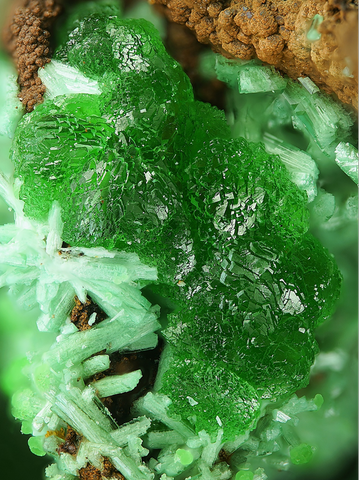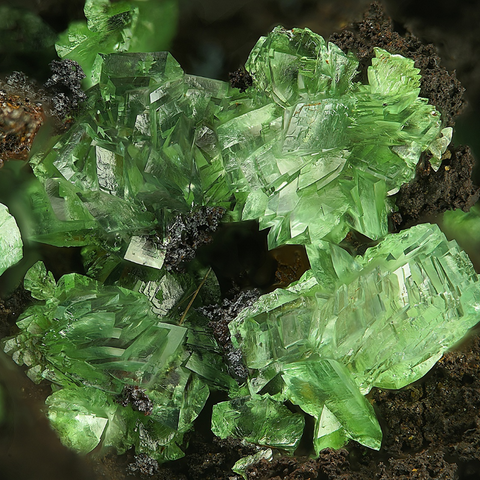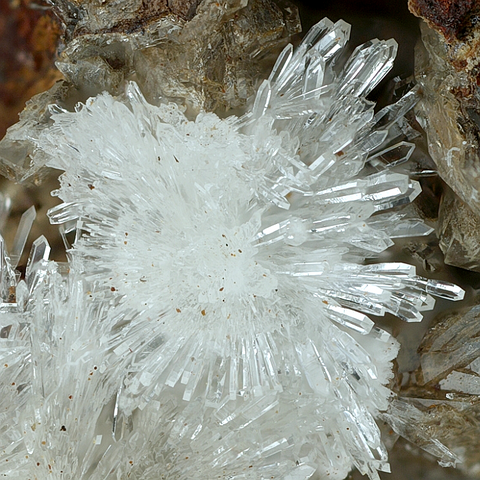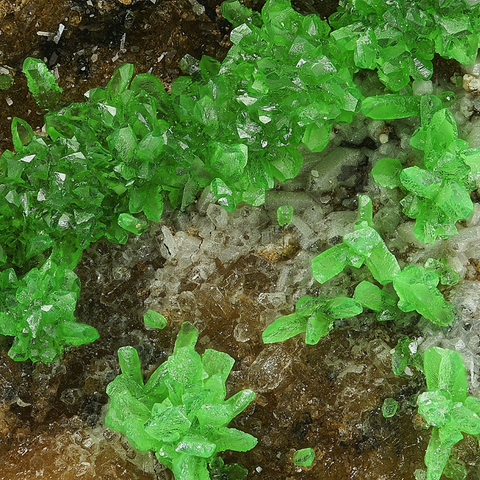AUSTINITE
Class : Phosphates, arsenates, vanadates
Subclass : Anhydrous arsenates
Crystal System : Orthorhombic
Chemistry : CaZn(AsO4)(OH)
Rarity : Uncommon
Austinite is a secondary arsenate of zinc and calcium, present in the oxidation zones of polymetallic deposits rich in arsenic. It is a mineral that owes its name to Austin Flint Rogers, professor at Stanford University and president of the Mineralogical Society of America. It is an infrequent companion of adamite which crystallizes into tiny needles or lamellae frequently agglomerated into encrustations or nodules with a fibroradiated texture. Austinite is colorless, white, pale blue to pale green, sometimes true green.
Main photo : Austinite on adamite from Jean Baptiste Mine, Kamariza, Lavrion, Greece © Stephan Wolfsried
Austinite in the World
Twinning and special crystallizations
Twin known on (100) for this mineral species.
Fakes and treatments
No fake or treatment identified for this mineral species.
Hardness : 4 to 4.5
Density : 4.2
Fracture : Irregular
Trace : White
TP : Translucent to transparent
RI : 1.759 to 1.783
Birefringence : 0.024
Optical character : Biaxial +
Pleochroism : None
Fluorescence : None
Solubility : -
Magnetism : None
Radioactivity : None






